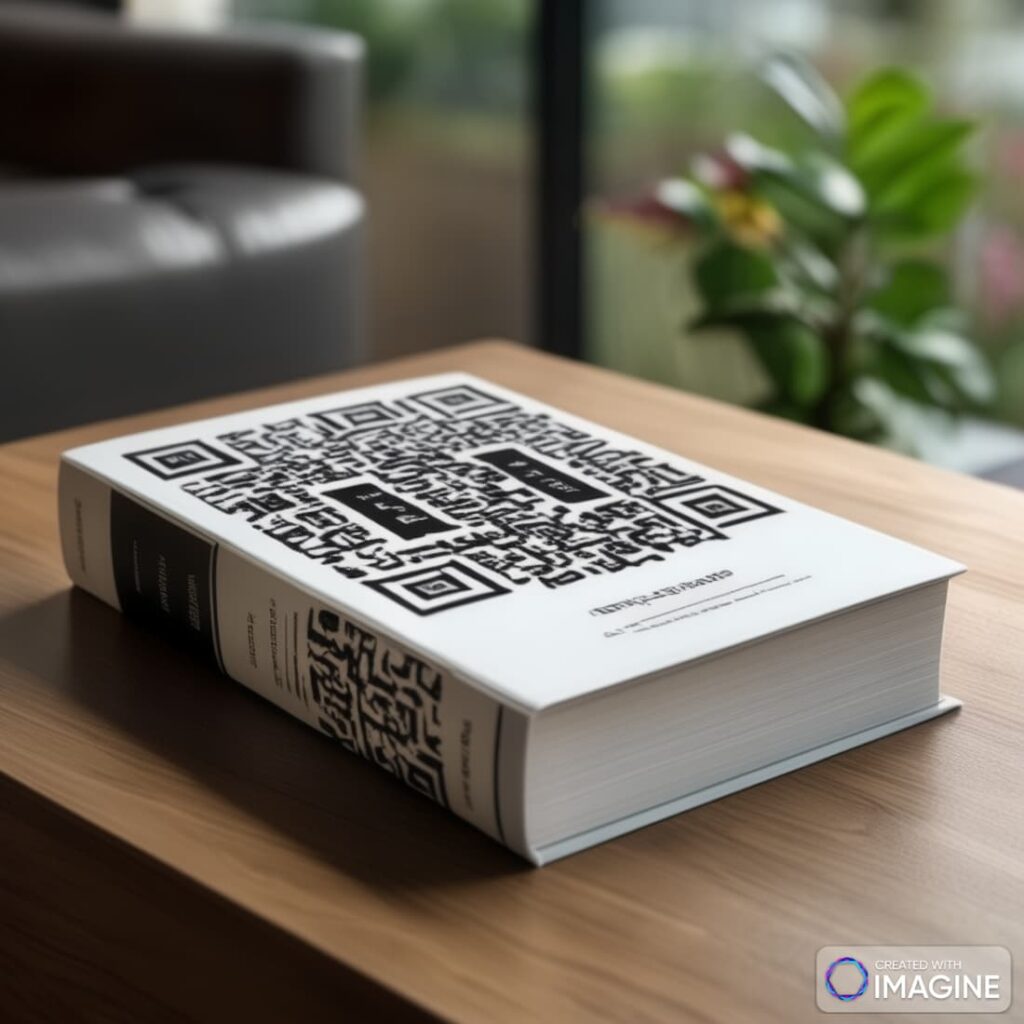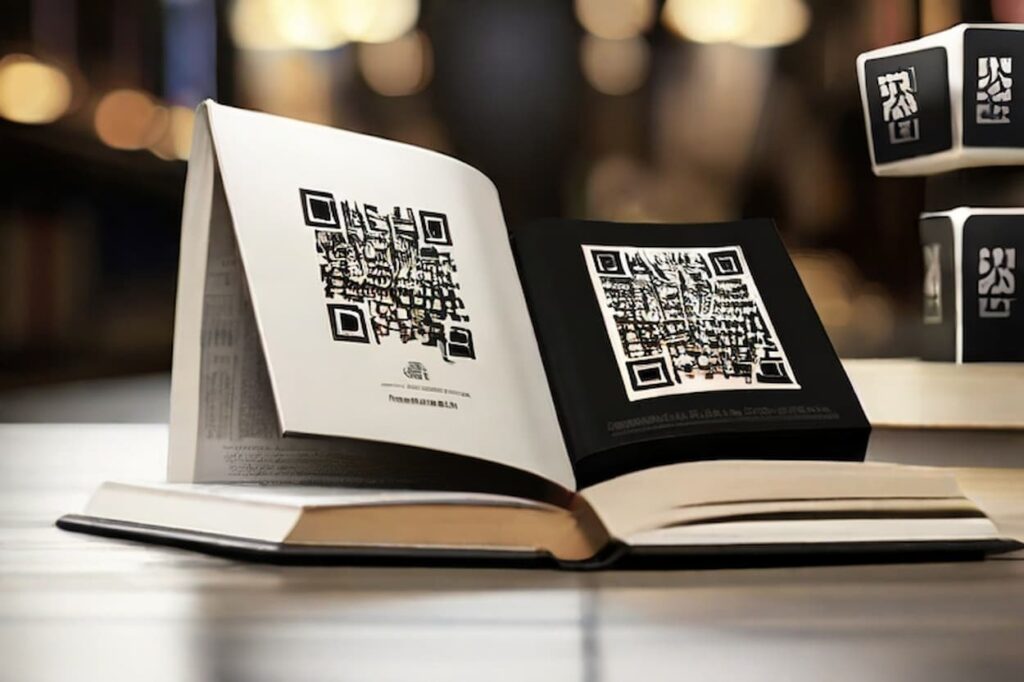
Publishing houses today are leveraging technology to offer readers a superior reading experience. QR codes have become an innovative way to increase book sales, market the latest releases, and offer ultimate cross-media engagement.
Thanks to the proliferation of mobile devices, QR codes have become an interactive element in this digital world. And publishing houses can get the most out of innovative QR code technology.
In this post, you’ll learn how QR codes can help promote your books, increase sales, and turn casual readers into furious loyalists. Also, we’ll show you how to create QR codes yourself with our QR code generator.
Table of Contents
- What Are QR Codes for Books?
- Why Use QR Codes on Books?
- Static QR Code vs. Dynamic QR Code
- How to Use QR Codes for Books?
- Send readers to the author’s or publishing house’s website
- Share book promo reels or author interviews
- Enable audiobook versions in different languages
- Promote titles, authors, or editorial companies on social media
- Collect feedback on the spot to iterate topics or narratives
- Connect students with additional materials for better learning experience
- Share related image galleries for interactive engagement
- Wrap-Up
What Are QR Codes for Books?
QR codes on books are any type of QR code printed on a book’s surface. Publishing companies print QR codes directly on the front cover, back cover, spine, and even inside pages to link the reader to any related information.
Other publishing houses print QR codes on separate inserts or stickers that are then affixed to the book, offering greater flexibility in design and placement —inserts are usually added during the printing or binding process.
The contents of the QR code relate to the book itself and allow authors and publishers to include additional information, hence adding value to the book.
Why Use QR Codes on Books?

Additional content
Use QR codes to link to additional content related to the book, such as author interviews or bios, promotional videos, related podcasts, or similar titles of the same genre or by the same writer. The information contained therein enhances the reader’s experience by offering more context or insight into the book’s creation.
Academic books can also benefit greatly. In case readers feel like exploring the topics further, QR codes on books link to articles, studies, or sources cited in the book. This information can include additional reading lists, glossaries, or educational materials.
Interactive features
Readers can also access interactive elements like quizzes, polls, or interactive maps when scanning QR codes. This way, they deepen their engagement with the book’s themes or characters.
Putting QR codes on specific sections can take readers to review sites where they can share their thoughts on the content. Reviews are a critical interactive element that will prompt readers to engage with the book.
Marketing and promotion

Embedding QR codes on books can direct readers to the author’s website, social media profiles, or other books by the same author. This serves as a promotional tool that helps build engagement among critical audiences.
QR codes are cost-effective to increase the scope of your marketing efforts. Instead of printing additional materials or advertisements —flyers, posters, or banners— you can easily include the QR code in your book so it links readers to any promotional content online.
Educational purposes
Printing QR codes on educational books allows students to connect with additional resources such as study guides, tutorials, or multimedia content that complement the material in the book and improve learning. This empowers students to explore related topics more deeply and at their own pace.
QR codes on educational books also offer differentiated instruction by providing alternative explanations, extension activities, or remedial materials tailored to individual students’ needs. This way, teachers and lecturers can personalize the learning experience and cater to diverse learning abilities within the classroom.
Also see: How to Use QR Codes in the Classroom in 2024 – Comprehensive Guide
Translations and pronunciations
When it comes to books, language should not be a barrier. QR codes can link to audio versions in a desired language, allowing readers to access digital formats they can enjoy and understand.
QR codes make translated versions of books more accessible to readers who are not fluent in the original language. Instant access to translations removes language barriers and allows a wider audience to engage with the content.
Updates and revisions

In non-fiction books, QR codes can link to updated information or corrections, ensuring that readers have access to the most current content even after the book is published. Dynamic QR codes are perfect for this, as they can be edited endlessly to fit new information.
This way, readers get more value for their money, as they don’t need to purchase new books with updated information. All they need to do is scan the embedded code and access other new material.
Reader engagement and feedback
QR codes are a great tool to measure your book’s success. They can link to surveys or Google Reviews, allowing readers to provide input on the book or participate in discussions related to the topics or the story.
QR codes on books foster a sense of community among readers. They have the opportunity to opine and engage in conversations that transcend the book itself and encourage word-of-mouth promotion.
Static QR Code vs. Dynamic QR Code
QR codes are divided into two types, each one with its own features and capabilities: Static and Dynamic. Static QR codes are the basic version, while Dynamic QR codes offer unique insights and capabilities, more suitable for marketing purposes.
Unlike Static QR codes, Dynamic QR codes can track the number of scans, the location, and the device used to gauge campaign success. Also, they are completely editable: Owners can modify the content without the need to print new codes, which can be costly.
With a Dynamic QR code, owners only need to open a QR.io account, create it, and edit it on the platform any time they see fit. They are especially useful in the publishing industry, as companies can track unique insights and edit the content easily!
Also see: Static Vs Dynamic QR Codes: When to Use Either?
How to Use QR Codes for Books?

Use a QR code generator like QR.io to create a myriad of QR codes —both Static and Dynamic— to get the most out of your editorial products and enhance the readers’ experience.
Send readers to the author’s or publishing house’s website
Use QR.io to create a URL QR code that includes several links, which can take readers to the author’s website or that of the editorial company.
QR codes linking to websites offer a unique opportunity to showcase upcoming books and related titles, promote writers, and engage readers further.
Use our QR code for multiple links to add several links to take your reader to different websites you consider important for your marketing efforts.
Share book promo reels or author interviews
With QR.io, create a Video QR code to engage your readers with captivating visuals that will hook them with the work in question.
If you already have posted promo reels on social media channels, use a YouTube Video QR code or a Vimeo QR code to link the audience to video formats.
Use these codes to embed any link redirecting users to author interviews in which they share more context with the readers. Your audience will be thrilled to hear from them all about their creation process and any additional information!
Enable audiobook versions in different languages

An audio QR code printed on your book’s internal pages offers readers the chance to break the language barrier. Use QR.io to create an MP3 QR code that will link to an audiobook in any language, to broaden your reader scope.
You can also use the same code to include podcasts with the authors or any other audio material you consider relevant to improve your reader’s experience.
Promote titles, authors, or editorial companies on social media
With a social media QR code, engage readers with your social platforms to increase interactions and grow your fanbase. If you’re an author or a publishing house, the QR Code for All Social Media is the right solution!
Book marketing strategies can’t be conceived without the power of social media platforms. Authors and publishers can turn billions of active users worldwide into faithful readers —they can share updates, and behind-the-scenes content, and interact through comments, messages, and live sessions.
Collect feedback on the spot to iterate topics or narratives
Through a Google Reviews QR code, your publisher can gauge reader engagement and collect important feedback. With this feedback, authors and publishers will get a unique insight into the interests of potential buyers.
Connect students with additional materials for better learning experience

Placing a QR code for a PDF in an educational book will help you share additional information with students. Without the need to carry the book around, they can access digital versions of chapter summaries, exercises, and fact sheets by just scanning the code.
This will make the learning experience more engaging, especially among today’s tech-savvy generations that prefer to digest some content online. Today, students rely on technological tools that help them achieve their academic goals —such as an AI essay writer or reference management software.
Share related image galleries for interactive engagement
Transcend printed words and round up an engaging literary experience with a QR code for photos. With this code, you can link readers to whole image galleries related to the story, comprising landscapes and characters.
Use the same code to enhance graphic materials in educational books, linking to charts, formulas, and images that paint a clearer picture of the topic —this is especially useful since you can only include several images based on the number of pages.
Wrap-Up
Adding QR codes to book marketing is the best way to connect readers with the world of literature and knowledge. So feel free to start your free trial with QR.io and create all the dynamic codes that will help you market your editorial products. Start today!
